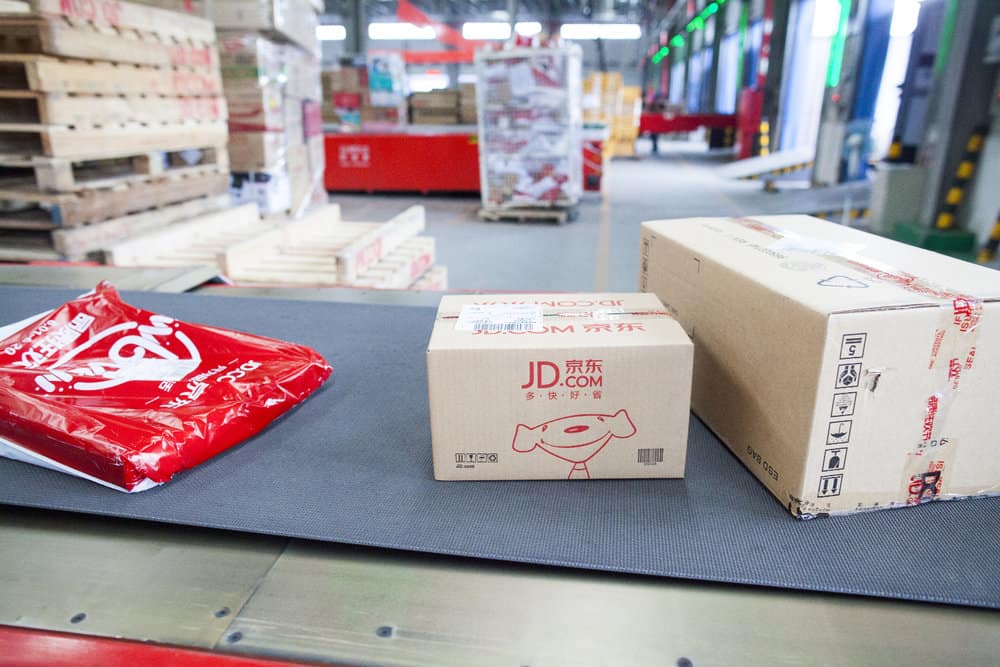The views expressed here are solely those of the author and do not necessarily represent the views of FreightWaves or its affiliates.
With each year and each holiday shopping season that passes, global retail ecommerce sales attain a new record. According to forecasts released in February 2019 by Statista, ecommerce sales in the United States have grown from about $468 billion in 2017 to about $550 billion in 2019, and will grow to more than $740 billion in 2023.

Over the period that these projections cover:
- The average growth rate per year is about 8%.
- The maximum growth occurs between 2019 and 2020, when the projected growth rate exceeds 10%.
- The minimum growth occurs between 2022 and 2023, when the projected growth rate is less than 5%.
Confirmation of this phenomenon comes in this press release issued by Amazon.com on December 26, 2019: Customers Shopped at Record Levels this Holiday Season with Billions of Items Ordered Worldwide – Plus Customers Purchased Tens of Millions of Amazon Devices.
However, an insidious problem accompanies all this growth – returns.

How bad is the problem of returns in retail ecommerce?
In this article, retail ecommerce refers only to the sale of physical goods to private, individual end-consumers, through a digital channel.
In its 2018 Consumer Returns in the Retail Industry report, Appris Retail incorporated data from the National Retail Federation’s (NRF) Organized Retail Crime Survey and concluded that:
- The median amount of returns is 10% of total retail merchandise sales.
- The median amount of fraudulent returns is 5% of total returns.
- The median amount of return fraud and abuse is 6.5% of total returns.
The data makes it clear that fraud and abuse increase during each holiday shopping period. However, the data specific to ecommerce is even more dire.

In Retailers Brace for Returns This Holiday Season, published by eMarketer on December 12, 2018, the author states: “According to data from B-Stock Solutions, a liquidation platform founded in 2008 by the team that built eBay’s private marketplace business, around 11% to 13% of holiday purchases are returned with closer to 30% of online purchases being sent back. By their estimates, between $90 billion to $95 billion in holiday gifts will be returned this year.” Before you get tempted to think that is a temporary blip, B-Stock Solutions estimates that “77% of shoppers are anticipating returning some of their gifts this season [2019], and nearly 20% expect to return more than half. In total, that will equate to more than $90 billion in returns this holiday season.”
That’s a problem, since returns reduce profits, and increase operating costs for merchants. The experience of processing returns also has an impact on customer satisfaction and loyalty. The image below from eMarketer’s article about returns outlines the categories of products online shoppers are most likely to return, comparing 2017 and 2018. Even if we assume no change from 2018 to 2019, one must admit that the data is startling, and returns represent a significant and growing problem for all ecommerce merchants.

In its 2019 Holiday Flash Report,1010data points out that online returns are both more frequent and more costly, since many ecommerce merchants offer free shipping for returns. According to 1010data:
- “Year to date through November 2019, Amazon saw a 6% return rate on net spend, while Walmart experienced only 2%.”
- “When we peer more closely at just one company, the Gap, the impact from online sales on returns becomes even more apparent. Online sales from 2015-2018 were returned at a rate four times higher than in-store sales. During that same period, the company’s return rate grew from 14% to 17% of total sales. The reason is clear – their online sales have a return rate of 31%, or almost four times higher than in-store sales.”
Insights from the field
According to Crunchbase, “Optoro is a technology company that helps retailers and brands manage, process and disposition returned and excess inventory,” and “B-Stock Solutions offers liquidation sales management solutions for companies.”
B-Stock Solutions has raised $73.2 million over three funding rounds, with the most recent being a growth equity round of $65 million led by Spectrum Equity. Other investors in B-Stock include Susquehanna Growth Equity, True Ventures and Harrison Metal.
Optoro was founded in 2010 and has raised $244.4 million over eight funding rounds. The most recent round of financing was a corporate round of undisclosed size from IKEA. Other investors in Optoro include Franklin Templeton Investments, UPS, Kleiner Perkins, Revolution, and Grotech Ventures. Optoro raised $40 million in venture debt in July 2016.
In addition to competing with one another, Optoro and B-Stock Solutions compete directly with Happy Returns, Loop Returns and Returnly. Optoro and B-Stock serve both digital native and digital immigrant brands, while the others appear to focus on digital native brands.
Howard Rosenberg built eBay’s Private Marketplace business. After more than six years doing that, he and the team that built the business left eBay in 2008, taking the business with them to form B-Stock Solutions. As you might imagine, he’s seen various incarnations of the returns problem, and has a unique view of the role reverse and last-mile logistics are playing as ecommerce continues to grow.

I asked Rosenberg for his perspective about how the retail industry, and ecommerce merchants in particular, are turning to technology to help them manage the problem posed by returns, and how this has changed over the past decade. According to Rosenberg, three main things have changed in retail over the past 10 years:
- Ecommerce has taken a much more significant share of overall retail (with 3x the return rate of brick and mortar retail).
- Amazon decided its mission was to become “Earth’s most customer-centric company” (which led the company to institute a super-friendly, no-questions-asked returns policy that all other retailers had to match to remain competitive as Amazon’s power grew).
- Given the impact the first two points have had on the volume of returns, retailers now realize that minimizing the cost of those returns is absolutely critical in order to remain competitive. And part of minimizing that cost is recovering the maximum amount possible for them in the secondary market.
I pressed him for a bit more background, with some examples of how B-Stock helps solve this problem, given that it appears to only be getting more acute each year. He sent me this response:
“Returns have become the ‘freemium’ offering of ecommerce; retailers know if they get new consumers to buy things, they can build on that relationship and keep the customer over a long period of time with repeat purchases – building their lifetime value to the retailer. The fastest path to purchase is to remove all risk, and a liberal return policy achieves that.

But an easy return for the customer has become a logistical and financial nightmare for the retailer; this is forcing companies to rethink processes for how they offset loss, both pre- and post-return. The smart ones are turning to technology.
Some retailers are using augmented reality apps to give shoppers a better way of visualizing the product and thereby cutting down on buyer’s remorse. Other companies are enlisting third parties to discreetly track how often shoppers return purchases and punishing serial abusers.
We’re also seeing a few retailers adopt technology-based programs for how to deal with the merchandise once it’s returned to the warehouse. For example, there are software-as-a-service inventory management solutions that – based on data – determine the best channel for an item once it returns to the warehouse (re-shelve, refurbish, liquidate, scrap).
More of this returned inventory is being slated directly for liquidation into the secondary market. This is due to a few reasons including:
- B-Stock has changed the economics of liquidating this inventory by increasing prices 30-80% above traditional liquidation techniques. This is a game changer for retailers who can now buy differently and change their markdown cadence to keep the most profitable inventory on the sales floor.
- The high cost associated with processing items back on shelf (it costs twice as much to process an online return as it does to sell it).
- Vendors no longer want the products back due to processing costs.
- Social/environmental responsibility – sending items to landfills is socially unacceptable.
Many retailers are leveraging newer technology-based liquidation methods like B-Stock’s. We bring a huge business buyer network and introduce real-time competition for the goods, which produces higher pricing on the merchandise as well as a faster sales cycle in which the inventory is sold.
Adoption of our B2B [business-to-business] liquidation marketplace platform has spiked in the last decade. We now operate over 60 B2B liquidation marketplaces including for nine of the top 10 retailers among dozens of other recognizable brands and manufacturers. Over the last 10 years we’ve seen a 96% compound annual growth rate in GMV (the sales proceeds of all merchandise sold across our network of marketplaces). The higher pricing our clients achieve drops straight to the bottom line.
Less than half of retailers are currently incorporating technology-based solutions for the reverse flow of merchandise, but as return rates rise, it will be essential for survival. This will include leveraging technology to tackle the last mile of the reverse supply chain – liquidation.”

Is blockchain a partial solution?
Coincidentally, while I was catching up recently with Stephanie So on a telephone call, we talked about potential applications of blockchain technology and digital tokens to this problem. She’d been thinking about it as well.
So is co-founder and chief development officer at GEEQ, a multi-blockchain platform secured by a proprietary proof-of-honesty protocol. As So pointed out to me, one of the issues at play in returns is that there’s information asymmetry between all the parties involved. Even worse, there’s moral hazard and the free rider problem at play too when fraud is involved – think of shoppers who buy clothes to wear to a fancy party, with the intention to return those clothes after the party. A simple digital token could be created that monitors usage of various types of merchandise to ensure that a merchant using the platform knows the state of the product before fully processing a return. I am simplifying our conversation greatly, and there are issues of privacy to consider, but you can see how this might work for electronics, footwear and certain types of apparel.

Given the growth rates reported by Rosenberg, it is inevitable that merchants will start turning more and more to technology for solutions to the problem of fraudulent returns. In that instance a solution such as the one being conceptualized by So and the team at GEEQ could offer some promising approaches to solving this growing problem.
If you are a team working on new supply chain innovations that you believe have the potential to tame the tsunami of returns in retail ecommerce, we’d love to tell your story in FreightWaves. I am easy to reach on LinkedIn and Twitter. Alternatively, you can reach out to any member of the editorial team at FreightWaves at media@freightwaves.com.







